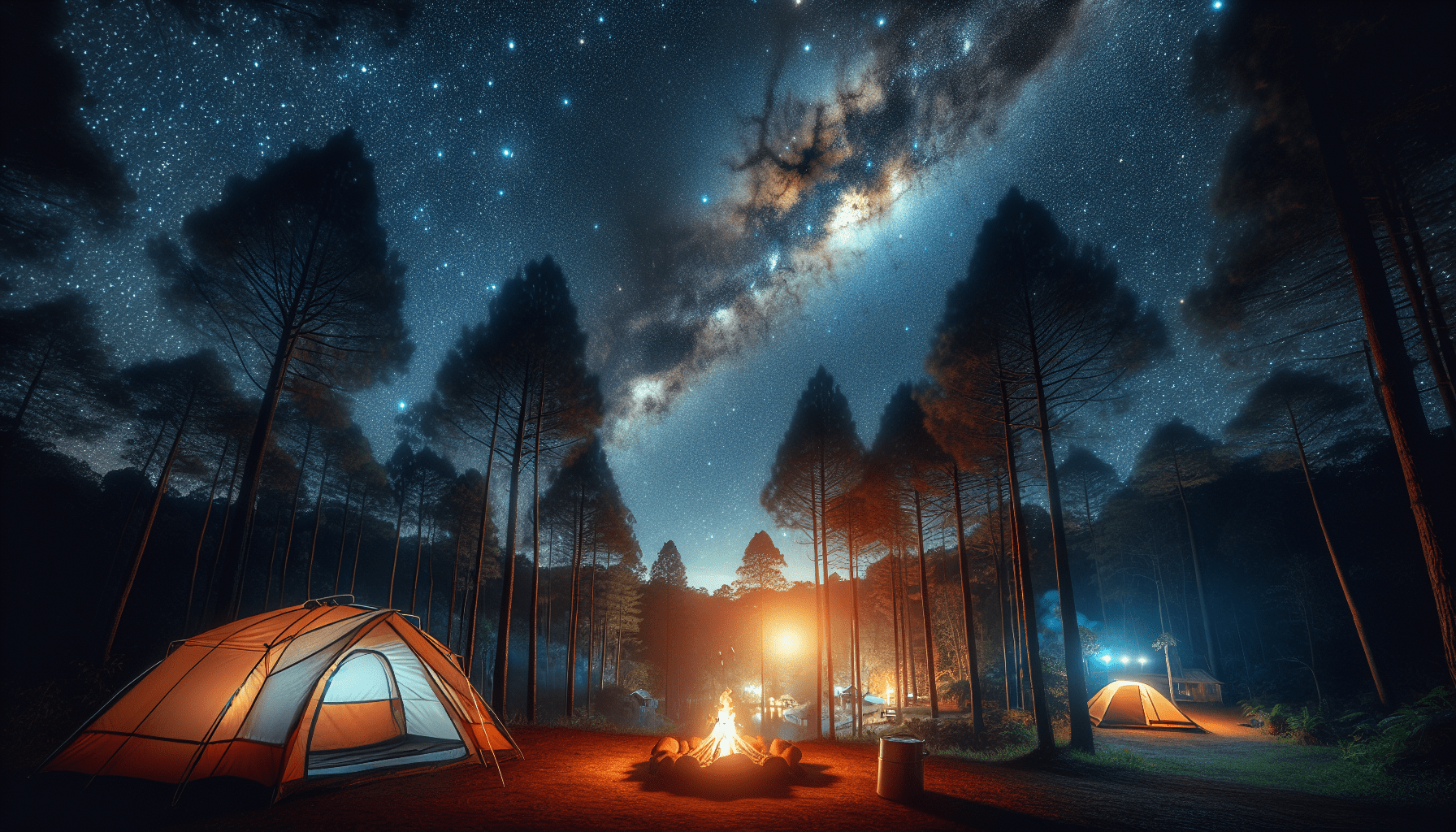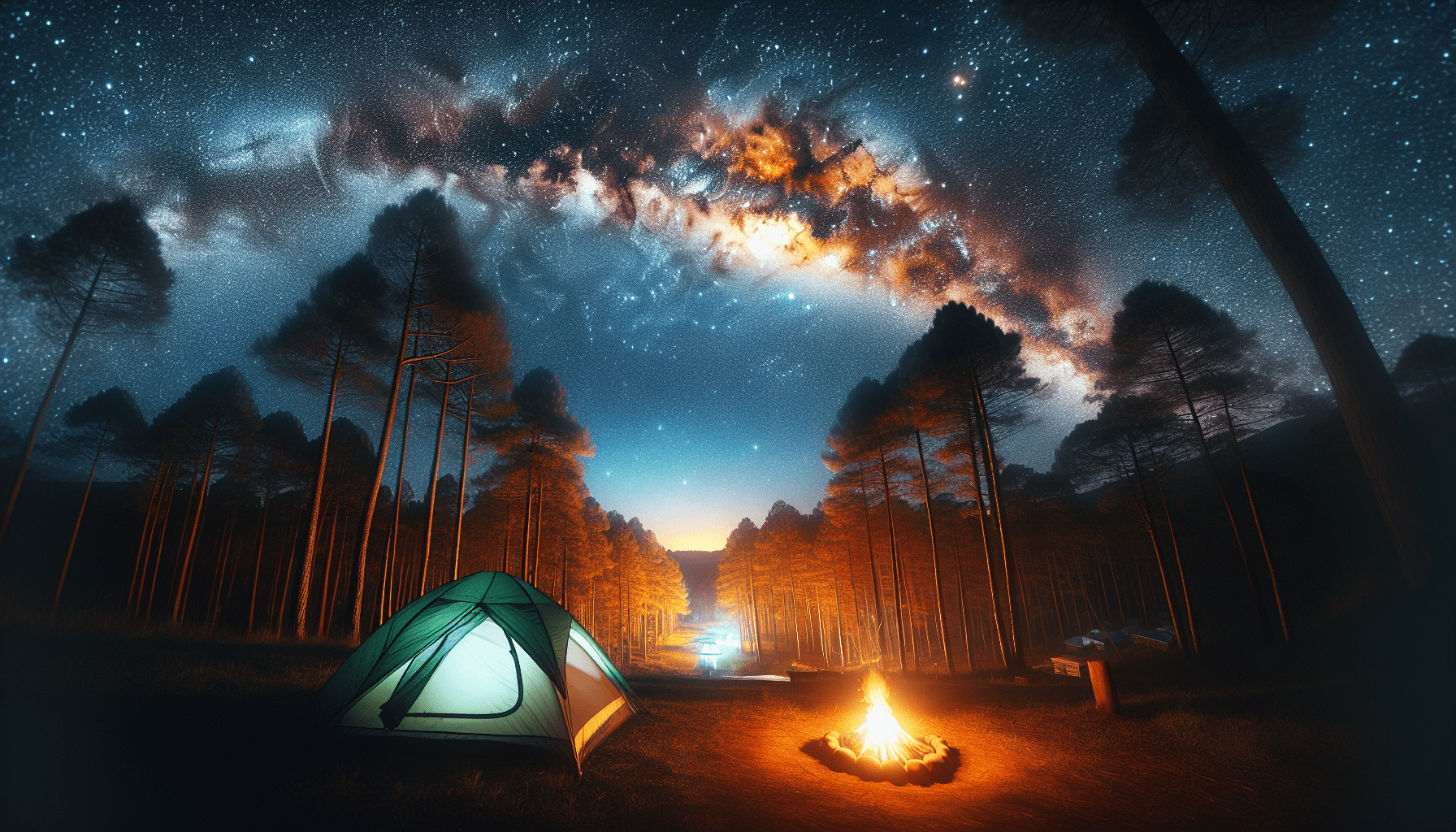BAGAIL 8 Set Packing Cubes Luggage Organizer Bags for Travel Accessories-Cream
$16.99 (as of April 16, 2025 04:30 GMT +00:00 - More info)Imagine lying beneath a sky so clear that you can see the Milky Way stretching from horizon to horizon, with its countless stars twinkling like diamonds on velvet. “Best Campgrounds in the U.S. for Stargazing” guides you to the most breathtaking stargazing destinations across the country. From the vast, arid landscape of Death Valley National Park to the serene, old-growth forests of Headlands International Dark Sky Park, each location offers a unique celestial experience. Whether you’re exploring the towering sand dunes of Great Sand Dunes National Park or the remote beauty of Big Bend National Park, this article provides all the essentials you need to escape city lights and marvel at the night sky. In addition to exploring these top-rated spots, you’ll find helpful tips on timing, preparation, and the best conditions for a perfect night under the stars.
Best Campgrounds in the U.S. for Stargazing
Have you ever marveled at the beauty of a starry night and wished you could see even more? Whether you’re an amateur astronomer or just love gazing at the night sky, escaping the city lights can offer an unparalleled experience. Let’s dive into some of the best campgrounds in the U.S. that provide the perfect setting for stargazing.
Shop These Accessories for a Comfortable Trip
Death Valley National Park
Tucked between Nevada and California, Death Valley National Park offers a unique combination of remoteness and clarity that makes it a premier stargazing location.
Unique Features
Death Valley National Park boasts a dry climate with low humidity and exceptionally clear air. These conditions are prime for stargazing.
Gold Tier Dark Sky Location
This park is rated a Gold Tier dark sky location by the International Dark-Sky Association (IDA). This is the highest rating possible, indicating minimal light pollution and exceptionally dark skies. It’s a dream come true for stargazing enthusiasts.
Camping Recommendations
The campgrounds here operate on a first-come, first-served basis. Due to the extreme heat, it’s recommended that you use an RV for some added comfort. However, late fall to early spring offers cooler temperatures for tent campers.
Big Bend National Park
Let’s take a trip down to Texas, where Big Bend National Park offers some of the darkest skies in the country.
Remote Location
Situated along the Rio Grande River, this park is less-visited due to its remoteness, offering you a peaceful and serene stargazing experience.
Year-Round Starry Nights
No matter when you visit, you can enjoy dark skies all year round. The slightly cooler seasons provide optimal conditions for stargazing with comfortable temperatures.

Shop These Accessories for a Comfortable Trip
Great Sand Dunes National Park
Visiting Great Sand Dunes National Park in southern Colorado is like stepping into another world. This park is home to the tallest sand dunes in the U.S., and its stargazing opportunities are equally impressive.
Unique High Elevation
Thanks to its high elevation, dry air, and minimal light pollution, this park offers excellent visibility for stargazing.
Quiet and Unique Experience
Experience a quietness that amplifies the beauty of the night sky. Sand dunes under a starry sky offer a one-of-a-kind viewing experience.
Waterton-Glacier International Peace Park
For those willing to journey to the northern reaches of Montana and Alberta, the Waterton-Glacier International Peace Park promises a breathtaking stargazing experience.
UNESCO World Heritage Site
This park is a UNESCO World Heritage Site and certified dark sky destination, offering pristine, unpolluted night skies.
Optimal Visit Time
The best time to visit this park for stargazing is during the summer months when the weather is less harsh and the skies are clearer.

Cherry Springs State Park
Pennsylvania holds a hidden gem for stargazers: Cherry Springs State Park. This park is known for its extreme darkness and minimal crowds, providing a tranquil setting for stargazing.
Dark Sky Certification
Cherry Springs is certified as the world’s second official dark sky park by the IDA. This makes it one of the darkest places on the East Coast.
Minimal Crowds
Due to its remote location and extreme darkness, you can enjoy a peaceful stargazing experience without large crowds.
Craters of the Moon
Idaho’s Craters of the Moon offers more than just landscapes that look like the moon—they offer incredible stargazing as well.
Unique Landscapes
This park features volcanic landscapes that add a surreal element to your stargazing experience.
Silver-tier Dark Sky Status
Craters of the Moon has earned an IDA Silver-tier status, making it an excellent location for viewing the night sky without light interference.
Lava Flow Campground
Stay at the Lava Flow Campground, which offers unique surroundings that complement the stargazing experience.
Headlands International Dark Sky Park
Located in Michigan, Headlands International Dark Sky Park offers serene beauty and some of the best opportunities for stargazing in the Midwest.
Old-Growth Forest
Situated along the Straits of Mackinac, this park features old-growth forest, adding to its natural charm.
Northern Lights Viewing
Besides stars, you might even catch a glimpse of the Northern Lights, especially during the colder months.
Additional Factors for Stargazing
Best Time to See the Milky Way
For those eager to catch a clear view of the Milky Way, summer months in the Northern Hemisphere are ideal. In the Southern Hemisphere, the best time is during winter.
Importance of Low Light Pollution
Low light pollution is crucial for optimal stargazing. All the featured parks have minimal to no light pollution, providing a clear and majestic view of the heavens.
Moon Phase
For the best stargazing experience, aim to visit during a new moon. The absence of moonlight allows the stars to shine their brightest.
Tips and Recommendations
Best Months and Conditions
- Northern Hemisphere: Summer months (June to August) are prime for stargazing due to longer days and generally clear skies.
- Southern Hemisphere: Winter months (June to August) offer the best stargazing conditions.
Gear and Preparation
- Camping Gear: Ensure you’re well-equipped with a good quality tent or RV, sleeping bags, and other essentials.
- Stargazing Tools: Bring a telescope or binoculars for a closer view of celestial objects. Don’t forget a stargazing app or star map to help you identify constellations.
- Clothing: Dress in layers to adapt to fluctuating temperatures, particularly in desert or high-altitude locations.
- Red Light Headlamp: Using a red light headlamp helps you navigate in the dark without disrupting your night vision or the view.
Making the Most of Your Experience
- Arrive Early: Set up your campsite before it gets dark to avoid fumbling around in the dark and ensure a comfortable setup.
- Stay Late: Don’t rush to leave; the best views often come late at night. Bring a comfortable seating arrangement and settle in for an extended sky-watching session.
- Document Your Adventure: Take photos (with the right settings) to capture the night sky’s beauty. Share your experience with fellow stargazers and inspire them to explore these incredible spots.
Closing Thoughts
Escaping the city lights and immersing yourself in the vastness of the night sky can be a transformative experience. Whether you choose the stark deserts of Death Valley, the remote wilderness of Big Bend, or the tranquil shores of Michigan’s Headlands International Dark Sky Park, each location offers its unique charm and unparalleled stargazing opportunities. Pack your gear, plan your trip, and get ready to be awe-struck by the universe above. Happy stargazing!






